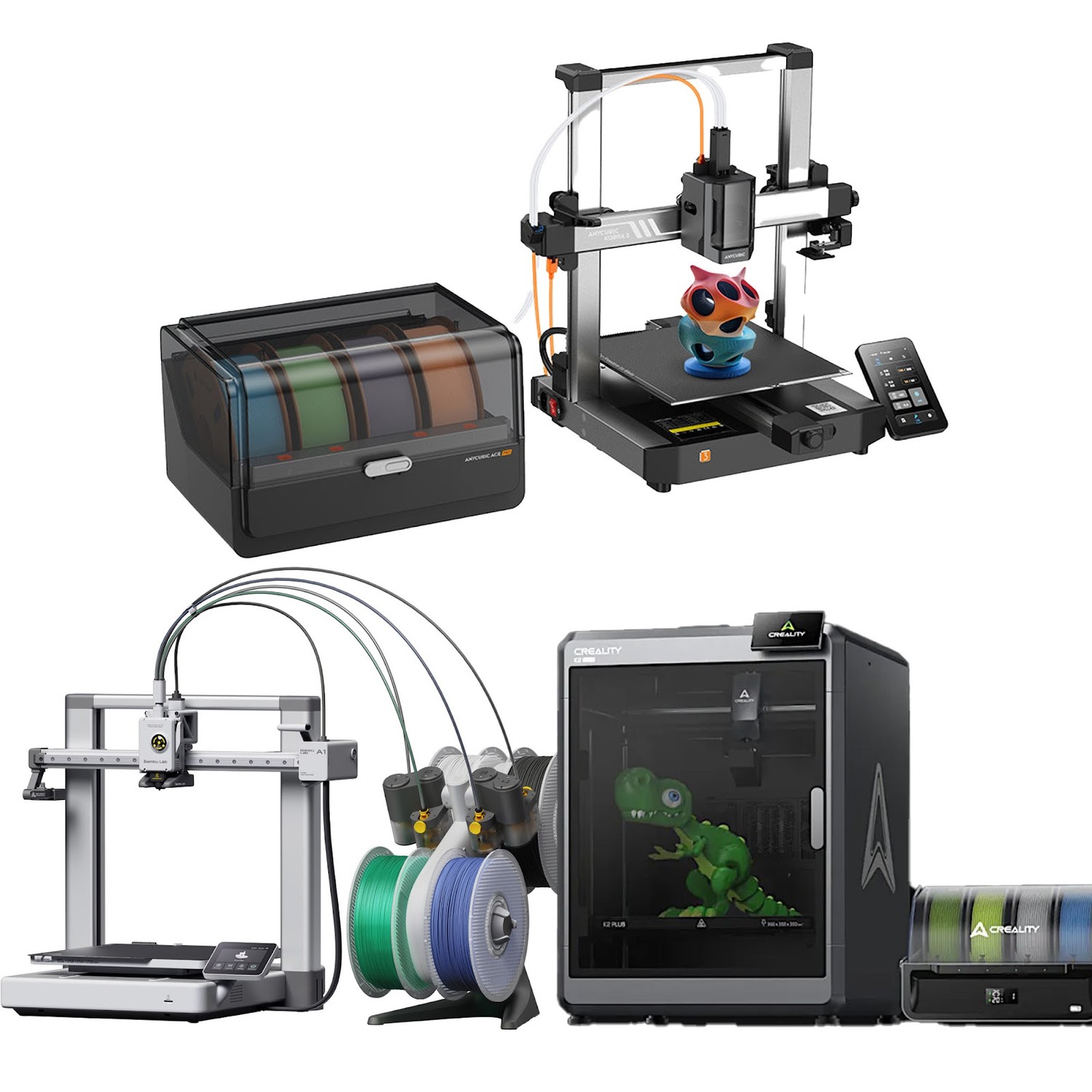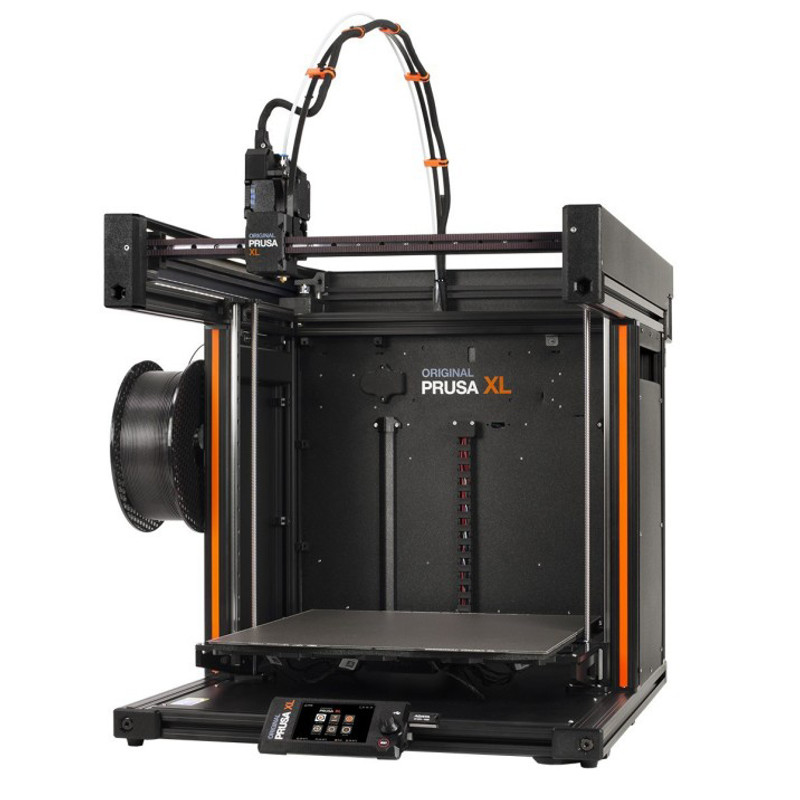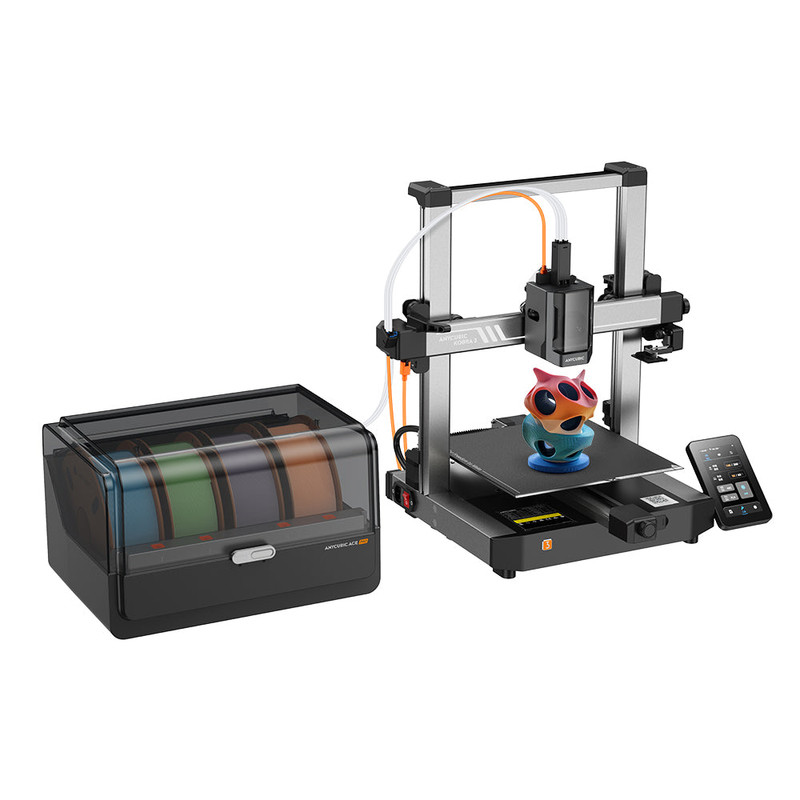
State of the 3D Printing Market in 2024

If you make a purchase using a shopping link on our site, we may earn a commission. Learn More
We’re currently halfway through 2024, and it’s already been an interesting year for 3D printer announcements. Several high-profile companies have announced or released new machines and we know there will be more to come for the rest of this year. I thought it’d be interesting to take stock of where the market is at right now, and share some of my personal opinions on who is dominating, who isn’t, and who to keep an eye on.
One of the clear winners in the 3D printing market over the past few years is Bambu Lab. I’m not sure anyone expected a new company to be able to burst onto the market and seize mindshare and market share the way they have, but it’s been something to see. Anecdotally, when I see someone who is into tech buy a 3D printer, it’s almost always a Bambu machine. It seems that their approach of prioritizing ease-of-use above all else has resonated with consumers.

We’ve had the opportunity to test a few of Bambu’s 3D printers and so far I’m inclined to agree with the hype. The P1S and A1 have been two of the best machines I’ve used, and the multi-material support is a huge value-add that most other brands haven’t yet matched. For the most part, the printers really do just work with no complaints.
What we’re all waiting to see now is what Bambu will release next. They’ve teased a new flagship 3D printer for 2024, and everyone is wondering if they’ll move to a larger build volume or possibly release a newer AMS unit. Even though I feel that they’re one of the best companies in 3D printing right now, I think they’re in somewhat of a tenuous position by being king of the hill. They’ve attracted a lot of attention, and now everyone is trying to match their current machines. If someone else can measure up and come in at a lower price or with more third-party upgrade potential, it could put Bambu Lab on notice. I think it puts a lot of pressure on their next release to impress users.
On the other hand, I’m seeing generally declining interest in Prusa. They made a splash this year with the release of the Prusa XL, and that machine’s large build volume and multi tool head system are notable upgrades over anything else in the consumer market. But the problem with the XL is that costs thousands of dollars to get into with a multi tool head setup, which I think is beyond the reach of many consumers. And Prusa’s main machine, the MK4, just isn’t offering enough to justify its high price.

Prusa has always traded on three key features: quality, customer support, and open source support. They’ve always been a go-to choice for consumers who are willing to spend the money on a quality machine or who want to support the ideals of 3D printing. But I think they’ve been simultaneously attacked by Bambu Lab and the economy: consumers who are willing to pay for quality have another solid choice with Bambu, and fewer consumers are willing to pay a premium for open-source support in the current market. I don’t really see a way for Prusa to remain a major player without finding a way to compete more directly on price.
Creality has also found itself in an awkward position this year. They enjoyed several years of dominance on the lower end of 3D printers, with machines such as the Ender 3 getting tons of people into 3D printing at a previously unheard-of price. But I think Creality lost their lead by letting the competition catch up without sufficiently expanding their brand into new areas of the market. When Bambu Lab came onto the scene, suddenly anyone who was willing to spend a bit more on their 3D printer had more compelling choices, and consumers shopping on the lower end have started to have options from a number of other brands, such as Anycubic and Sovol. Suddenly Creality was just one of many choices in the same market space.

They’re clearly trying to turn things around now, with the K1 series serving as more direct competition to Bambu’s offerings. Creality’s new lower-end machines, such as the Ender 3 V3 KE, are still some of the best value machines in 3D printing. But I think the battleground for them is the higher end of the market—they’ll need to prove they can stack up to companies such as Bambu Lab to have users consider them, especially with machines such as the Bambu A1 Mini eating into Creality’s core base. I think their best chance is for the upcoming K2 Plus and CFS multi-material system to prove successful. It really needs to combine the ease of use of Bambu’s AMS with better support for third-party slicers and parts. If they can do that, I think it’ll keep them relevant.
Finally, although there are several smaller players in 3D printing, the two on my mind most right now are Anycubic and Sovol. Both of these companies have been quietly scooping up market share in the past few years, and while they’re typically not the first brands a new consumer will come across, their machines are directly competitive with the more established players such as Creality.

This year, we’re starting to see both companies strike out into more ambitious printers that may start putting them on the map. Anycubic has the upcoming Kobra 3 Combo, which looks to directly compete with the Bambu A1 Combo by providing similar print speeds and multi-material support. I think someone in this market is going to win by coming out with the first true competitor to the AMS, in both price and performance, and I think it’s going to be a close race between Anycubic and Creality for that title.
Sovol has a number of interesting machines in their lineup now, including a machine at the rare 500x500x500mm size, an IDEX printer with two independent hotends, and a CoreXY machine that promises print speeds as fast as anything else in consumer 3D printing. I’ve personally never really looked at buying a Sovol 3D printer, but I have to say that they’re doing interesting stuff and I’m keeping an eye on them as a growing force in the market.

There are, of course, plenty of other 3D printer manufacturers in the market. I haven’t mentioned them for a variety of reasons—in some cases, I don’t have enough familiarity with the brand to feel comfortable giving an analysis of their position. I’ve also only focused on the higher-profile brands, which leaves a lot of room for the smaller upstarts to make a name for themselves and make it into a future iteration of this post.
What I think is interesting about 3D printing is that even now, 10+ years after the market really started, there is still a lot of innovation and it feels like anyone’s game to win. Bambu Lab is one of the dominant players now, and they only appeared in the past few years. No company has an unassailable position here, and any company—whether it’s one we’ve heard of or not—could easily come out with the best 3D printer of 2024 or 2025. Whatever happens, I’m excited to see it, and excited for us to cover it here on 3DPros.